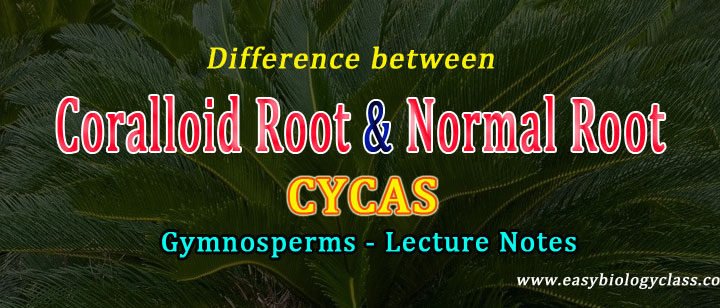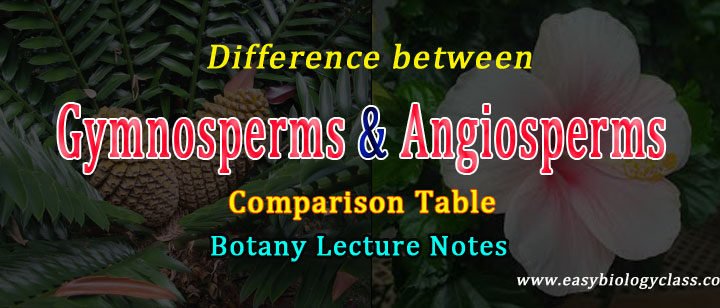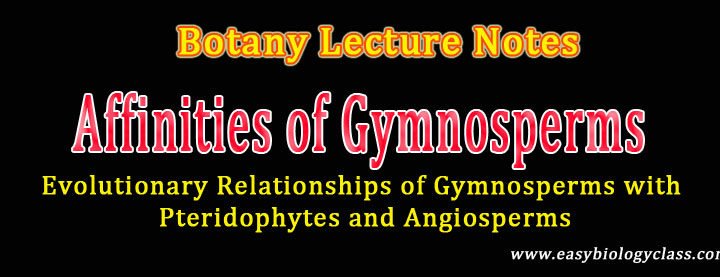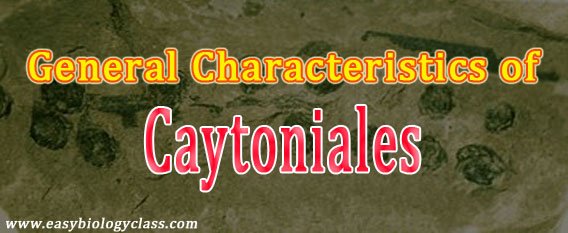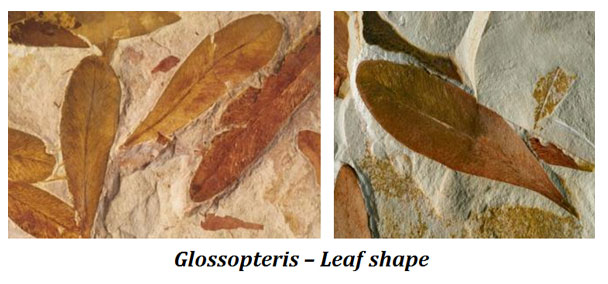Cycas- Normal vs Coralloid Root Cycas is a Gymnosperm coming under the Class Cycadopsida and Order Cycadales. Cycas plants have TWO types of Roots – (1) Normal Roots and (2) Coralloid Roots. In this post, we discuss the Similarities and Differences between Normal Root and Coralloid Roots in Cycas with […]
Continue ReadingTag Archives: Botany Lecture Notes
Difference between Gymnosperms and Angiosperms
Gymnosperms vs Angiosperms Gymnosperms and Angiosperms are two major groups of Seed Plants (Cryptogams). In the previous post, we discussed the General Characters and Affinities of Gymnosperms. Here, in this post, we will discuss the Similarities and Difference between Gymnosperm and Angiosperm. Similarities between Gymnosperms and Angiosperms Ø The main […]
Continue ReadingAffinities of Gymnosperms with Pteridophytes and Angiosperms
Learning objectives: Evolutionary relationships and affinities of Gymnosperms with Pteridophytes and Angiosperms; Similarities and Differences between Pteridophytes and Gymnosperms; Similarities and Differences between Gymnosperms and Angiosperms. Affinities of Gymnosperms Ø Gymnosperms are considered as a bridge between Pteridophytes and Angiosperms. Ø They share many features with Pteridophytes and Angiosperms. Similarities […]
Continue ReadingCaytoniales General Characteristics
What are Caytoniales? Ø Caytoniales were a small group of extinct Gymnospermic plants. Ø First described by Hamshaw Thomas in 1925 from the late Triassic period. Ø Caytonia is a berry-like cupules with numerous small seeds. Examples of Caytoniales Ø Leaves: Sagenopteris Ø Microsporophylls: Caytonanthus Ø Megasporophylls: Caytonia and Gristhorpia […]
Continue ReadingGlossopteridales and Glossopteris- General Characteristics
Glossopteridales and Glossopteris Ø Glossopteridales included an extinct group of seed plants (Gymnosperms). Ø They were originated during the Permian period on the Gondwana Continent. Ø They became the dominant vegetation in the Permian period. Ø They extinct completely by the end of the Triassic period. Ø The order name […]
Continue Reading
